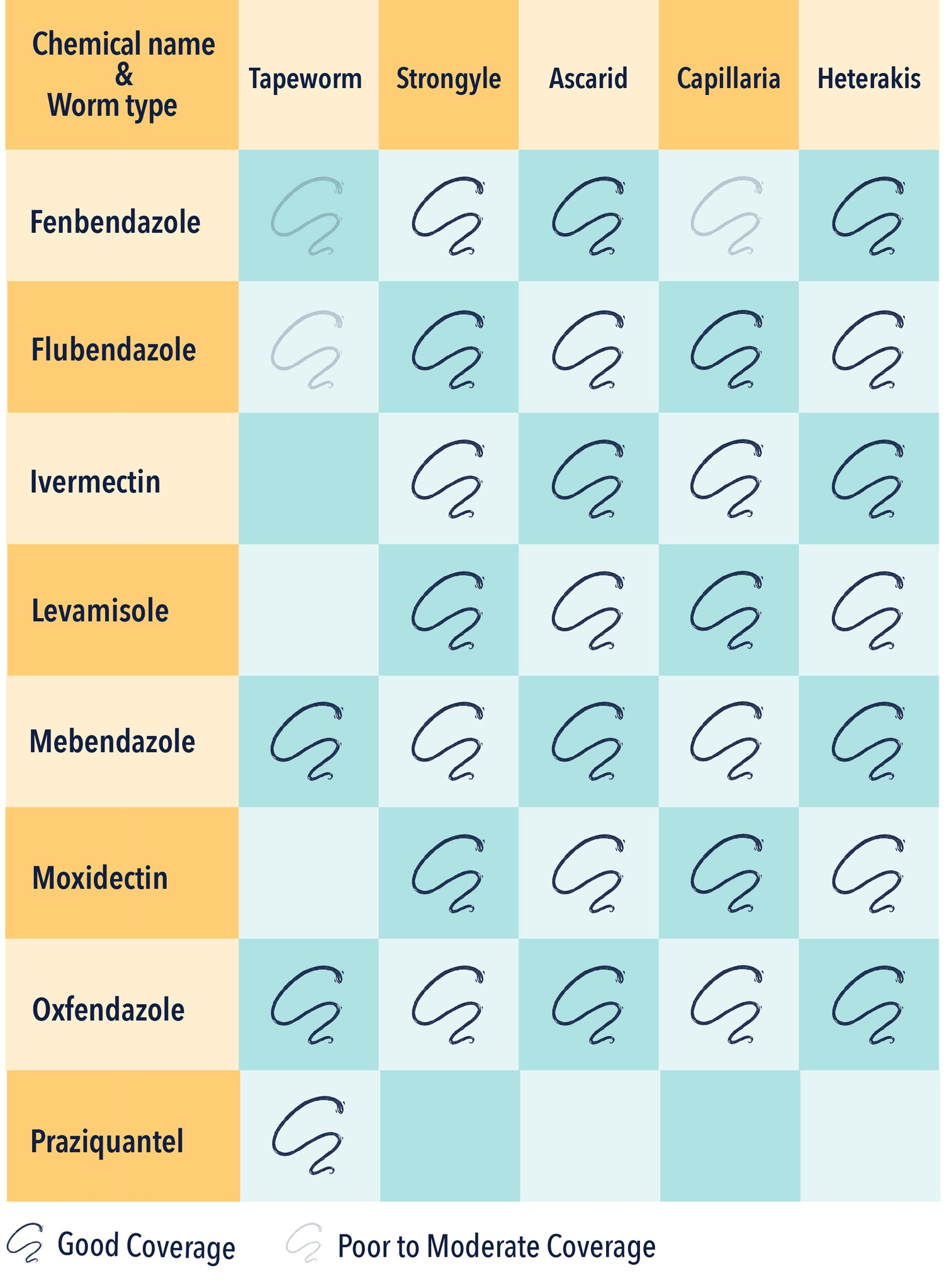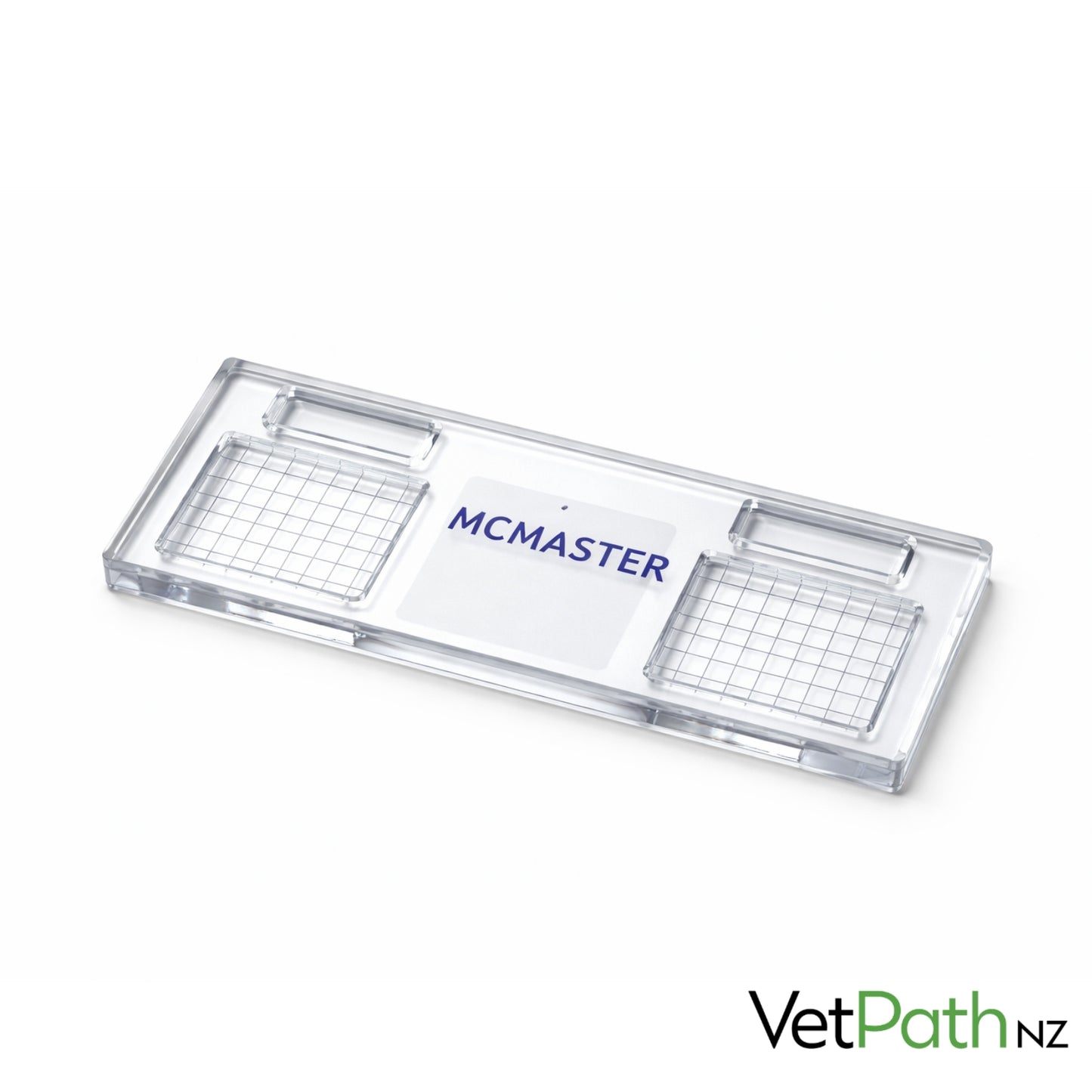

Chicken Worming Guide
Parasites can build up quietly and cause issues like weight loss, poor egg production, weakness, and even death. They also stress the immune system, making birds more vulnerable to other infections.
Regular worming is one of the simplest, most effective ways to protect your flock and support their long-term wellbeing. This guide is designed to be as simple and practical as possible, giving you a clear overview to make confident decisions.
Worming doesn’t have to be complicated, but it does need to be done right. Let’s get started.
If you would like a PDF version of this guide, you can find it below
A Few Quick Things to Note
Worms aren’t always visible.
Many internal parasites can’t be seen with the naked eye—just because you don’t see them doesn’t mean they aren’t there.
Fecal egg counts (FECs) are recommended.
These tests help identify the specific worm species present (if any), allowing you to choose the most effective treatment.
Prophylactic worming should be regular.
If you choose to worm preventatively, aim to treat your flock 4 to 6 times per year, spaced out appropriately. Remember to rotate your wormers so that you cover both round and tape worm.
No wormer is perfect.
Each product varies in flavour, coverage, treatment duration, withholding periods, and method of administration. Take these into account when choosing a worming approach.
One off doses don't cut it
Some worms are stubborn. Certain species, like Capillaria, require multi-day treatments and are more difficult to eliminate. Tapeworm require a one off treatment every 6-8 weeks for up to 2 year depending on your range! Not all wormers are equally effective for every type.
ACV and garlic are not wormers
Apple cider vinegar and garlic are often promoted as natural wormers, but they don’t kill or eliminate worms. While they may support gut health and help create a less friendly environment for parasites, they should never replace proper worming treatments.
Understanding Wormers

On-label vs Off-label Use
On-label use: Following the product instructions exactly (species, dose, method, frequency).
Off-label use: Using the product outside those instructions (e.g. cattle wormers for chickens).
mg (milligrams) vs ml (millilitres).
This is a common and dangerous mistake.
mg = amount of active ingredient
ml = volume of liquid
Trade Name vs Active Ingredient
Trade name = The brand or product name on the label (e.g. Aviverm, Flubenol, Panacur)
Active ingredient = The actual chemical that does the work (e.g. Levamisole, Flubendazole, Fenbendazole)
Active Dose Rates and information
Collapsible content
Fenbendazole
Active: Fenbendazole
Trade Name: Panacur 100 and Safe-Guard® AquaSol
Dose: 20–50 mg/kg
Treatment: Administer orally or add to the flock’s only drinking water source.
Withholds:
- Egg: 10 days
- Meat: 63 days
Notes:
- Broad-spectrum; does not cover tapeworms well.
- Not registered in New Zealand.
Flubendazole
Active: Flubendazole
Trade Name: Fubanol and Flubavet
Dose:
- 30 mg/kg (standard)
- 60 mg/kg (with tapeworm coverage)
Treatment: Formulated for use in commercial feed production. While it can be mixed manually into feed, this often results in uneven distribution and reduced efficacy.
Withholds:
- Egg: 0 days
- Meat: 0 days
Notes:
- Broad-spectrum wormer.
- Manual mixing onto feed often leads to uneven distribution and reduced efficacy. A follow-up faecal egg count two weeks after treatment is recommended to confirm effectiveness.
- On label, Both products are registered for use on chickens in New Zealand.
Ivermectin
Active: Ivermectin
Trade Name: Ivermec
Dose: 0.2 mg/kg
Treatment: Administer orally or topically.
Withholds:
- Egg: 10 days
- Meat: 63 days
Notes:
- Effective against mites and lice.
- Topical treatments aren't as effective as oral ones.
- Narrow safety margin.
- Is not effective against tapeworms.
- Off label in New Zealand.
Levamisole
Active: Levamisole
Trade Name: Aviverm
Dose: 20–36 mg/kg
Treatment: Administer orally or add to the flock’s only drinking water source.
Withholds:
- Egg: 7 days
- Meat: 7 days
Notes:
- Broad-spectrum; does not cover tapeworms well.
- Aviverm can be given orally at 0.1ml per kg of live weight to chickens
- On label, registered for use on chickens in New Zealand.
Mebendazole
Active: Mebendazole
Trade Name: Vermox and De-worm
Dose: 30 mg/kg
Treatment: Administer tablet orally.
Withholds:
- Egg: 10 days
- Meat: 63 days
Notes:
- Broad-spectrum; does not cover tapeworms well.
- Off label, Registered in New Zealand for humans.
Moxidectin
Active: Moxidectin
Trade Name: Vetmed (pour on)
Dose: 0.2 mg/kg
Treatment: Administer orally or add to the flock’s only drinking water source.
Withholds:
- Egg: 10 days
- Meat: 63 days
Notes:
- Broad-spectrum; does not cover tapeworms.
- Off label in New Zealand.
Caution! Many moxidectin-based wormers contain added mineral supplements that may be unsafe for chickens. Always check the full ingredient list before use.
Oxfendazole
Active: Oxfendazole
Trade Name: Bomatak C
Dose: 10 mg/kg
Treatment: Administer orally or add to the flock’s only drinking water source.
Withholds:
- Egg: 10 days
- Meat: 63 days
Notes:
- Broad-spectrum.
- Off label in New Zealand.
Praziquantel
Active: Praziquantel
Trade Name: Droncit and Wormicide
Dose: 10 mg/kg
Treatment: Administer tablet orally
Withholds:
- Egg: 10 days
- Meat: 63 days
Notes:
- Tapeworm-specific; not effective on roundworms; often combined with other actives.
- Off label in New Zealand.
Final Tips for Successful Worming
Weigh birds accurately
Medication dosing is based on weight. Guessing can lead to underdosing (ineffective) or overdosing (unsafe). Use a kitchen scale for backyard hens if needed.
Repeat treatments when needed
Most wormers require a second dose 10–14 days later to break the worm life cycle. Missing this step can lead to reinfestation.
Don’t mix wormers blindly
Stick to one active ingredient at a time unless specifically directed by a vet. Combining wormers can cause toxicity or reduce effectiveness.
Rotate worming actives yearly
Repeatedly using the same product can lead to resistance. Rotate between different active ingredients annually.
Check withholding periods
If you're consuming eggs or meat, always follow the egg and meat withdrawal times for each product, especially for off-label meds.
Use clean-up protocols
After worming, clean out bedding, scrub feeders/drinkers, and remove faeces to prevent reinfection from eggs in the environment.
FEC testing is your friend
If in doubt, do a faecal egg count before and after treatment to confirm worm burden and treatment success. It can help you reduce unnecessary worming too.
Keep good records
Note the date, product, dose, and any symptoms for each treatment. This helps you track patterns and avoid over- or under-worming.
Support with good nutrition
A healthy gut helps birds resist parasites. Provide a balanced diet, clean water, and vitamin supplements (like multivitamins or carvacrol supplements).
Vet Path Labs
Fecal Egg Count (Worm and Coccidia Surveillance)
Share



